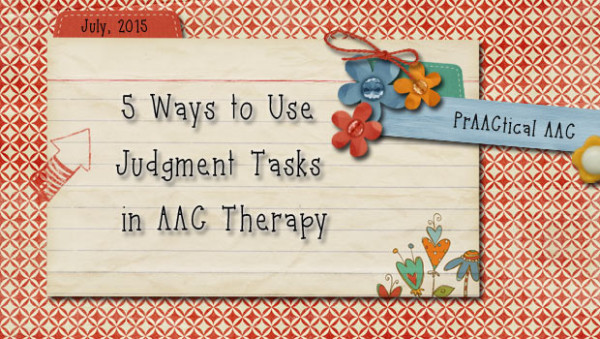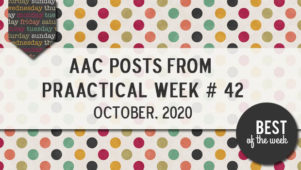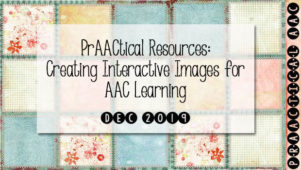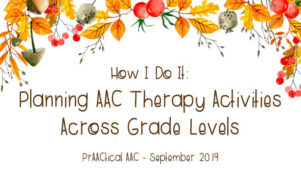5 Ways to Use Judgment Tasks in AAC Therapy

Judgment tasks refer to situations in which we present some examples and have the learner pass judgment on them. They can be examples of words used correctly/incorrectly, word endings used properly/improperly, or responses that fit well/poorly with a situation. We can set them up so that the learner weighs in with a binary judgment (e.g. thumbs up/down), gives them points (e.g., 2 points=perfect, 1=good, 0=wrong), a letter grade (e.g., A+ to F), or rates on a scale (e.g.,Excellent Okay Terrible).
There are several reasons why I love judgment tasks.
- It can be a fun, low-stress way to increase their awareness of specific linguistic concepts. Think of it as giving them receptive exposure to the concept. In these tasks, we’re highlighting the concept but not expecting them to produce it.
- They put the learner in a position of power. Our prAACtical friends often don’t get enough experiences with that role, so I like to try to find little things like this to even the playing field.
- It’s motivating! Most kids I know love nothing more than correcting their therapists, teachers, and parents.
- It’s easy. It’s not nearly as hard as putting together a phrase or sentence. Thumbs up or down. Pointing to a smiling or frowning face. These responses are quicker and easier than most things that we ask them to do.
Here are some examples of ways to use judgment tasks.
- Semantic concepts: “You be the teacher. Tell me if my sentences use our special words in the right way or the wrong way. Ready? ‘She invited me to the party.’”
- Morphology: “Listen while I use some of our special words in all different ways. Your job is to give me points for each one. 2 points if it is perfect, 1 if it is partially right, and 0 points if I’m just wrong. Okay, here’s the first one. ‘The fire alarm alerting us to smoke in the hallway.’”
- Syntax: “Ready to be a detective? I’m going to tell you two sentences that are almost the same. You listen for the difference and tell me which one sounds better. We’ll give that one a star. Ready? Number 1: ‘I found book. Number 2:I found a book.’ Which gets the star?”
- Pragmatics: “Your turn to be the teacher! Let’s look at a video of Gerald Giraffe interrupting his teacher. We’ll make a report card for him based on how he does with that. You can give him grades for his report card. A+ if he does it perfectly well, B if it is good but needs improvement, and F if he didn’t do it well.”
- Operational Competence: “I’m going to use your device to say some words. Sometimes I’ll do it a fast way but using the word buttons. Sometimes, I’ll do it a slow way by typing out each letter, and sometimes I’ll use word prediction. Your job is to tell me if I did it the fastest way, the slowest way, or somewhere in between.”
Do you use judgment tasks in your AAC teaching? We’d love to hear about it.
Filed under: PrAACtical Thinking
Tagged With: intervention ideas, language therapy
This post was written by Carole Zangari





2 Comments
My students have difficulty at the sentence – and even morphology – level. But I do use judgements tasks for social skills. I keep the situation simple and ask, “Is it ok to say…(X)?” Thumbs up or down either physically or on their “Chat” page is usually how they respond.
I also use judgment tasks for vocabulary building. Is (x) a (pick a category)? “Does (X) mean….?”
Great examples, Susan! Thanks for stopping by and taking the time to share these ideas. 🙂